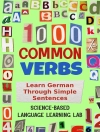Grow students’ linguistic capital AND value their home language
In Language of Identity, Language of Access, authors Michelle Benegas and Natalia Benjamin highlight the urgent need for a revolution in language education that validates home languages and dialects while equipping students with the linguistic tools for social mobility. Their original LILA framework rejects the socially constructed hierarchy of languages and provides students with a broader linguistic repertoire.
This accessible and teacher-friendly guide presents an overview of this liberatory approach to language and literacy, an exploration of linguistically sustaining and expanding instruction, and practical guidance on designing lessons that attend to the language of identity and the language of access. Additional recurring features include:
- Voces provide real-life teacher experiences from the classroom
- Reflecciónes encourage educators to consider how principles and ideas relate to current practice and promote translanguaging
- Practical applications of theories (PATs) provide conceptual frameworks and lesson plans on various topics and activities.
- End of Chapter Conversaciónes encourage dialogue and enable educators to implement concepts in their classrooms.
Offering a fresh perspective on academic language as a means to access power and social capital, Language of Identity, Language of Access is a guide for ALL educators committed to linguistically sustaining pedagogies and empowering students with linguistic capital for social mobility.
Innehållsförteckning
Dedication
Acknowledgements
Preface
How to Use This Book
A Note on Terminology
Part A: A Liberatory Approach to Language and Literacy in the Classroom
Chapter 1: It’s Time to Do Better – Moving beyond binary thinking about language in the classroom
Embracing Our Polarized Commitments: Finding Middle Ground
Positioning LILA: Challenging a Few of the “Fundamentals”
Language Teaching and Learning
“Additive” Approaches to Language Instruction
Code-Switching
Use of the Term “Academic Language”
The “Haley’s Comet Effect” in Education
Part B: Language of Identity: Practical Applications of Theory
Chapter 2: Foundations in the Language of Identity and Criticality
Language of Identity and Criticality
Using Foundational Theoretical and Conceptual Frameworks
Culturally Responsive Pedagogies: Identity and Criticality
Historically Responsive Literacy
Translanguaging
Raciolinguistic Ideologies
Community Cultural Wealth
Windows, Mirrors, and Sliding Glass Doors
Background on Language Domains
Chapter 3: Building the Language of Identity: Practical Applications of the Theory of Translanguaging
What is Translanguaging?
Using Mentor Texts
Chapter 4: Building the Language of Identity and Criticality: Practical Applications of Community Cultural Wealth
What is Communtity Cultural Wealth?
Chapter 5: Building the Language of Identity and Criticality: Practical Applications of Language Orientations
What are Language Orientations?
Orientations as a Text Analysis Tool
Part C: Language of Access: Practical Applications of Theory
Chapter 6: Foundations in the Language of Access
Functionalism and the Levels of Language
Planning for Functional Language Instruction through Noticing
Noticing at the Word Level: Phonology
Forecasting Text
Word-Level Text Scanning
Sentence-Level Text Scanning.
Discourse-Level Text Scanning.
Avoiding Unintentional Language Assessment
Designing Targeted Language Assessments
Chapter 7: Building the Language of Access: Practical Applications for Teaching Word-Level Language
Morphology
Word-Level Access Language Objective (ALO) Guide
Chapter 8: Building the Language of Access: Practical Applications for Teaching Sentence-Level Language
Sentence-Level Access Language Objectives
Chapter 9: Building the Language of Access: Practical Applications for Teaching Discourse-Level Language
Discourse-Level Access Language Objectives
Part D: LILA: Putting it all Together
Chapter 10: Planning for LILA in the classroom
Classroom Inventory: Language of Identity and Criticality
Classroom Inventory: Language of Access
LILA School-Wide Inventory
Om författaren
Natalia Benjamin, Ed S is the Director of Multilingual Learning for Rochester Public Schools and prior to that, she taught high school Ethnic Studies and Multilingual Learners in Rochester, MN. She is dually licensed in K-12 ESL and reading and holds a master′s degree in Language Acquisition and Teaching. She advocates for multilingual and multicultural education and is part of the Facing Inequities and Racism in Education – Racial Equity Advocates (FIRE-REA) program. She is also a trainer in Cultural Competency for Education Minnesota. She has been a member of several organizations that support teachers and students: Education Minnesota League of Latinx Educators, Employees of Color Resource Group and Rochester Education Association for her district, and the Women Issues Committee for the National Education Association. She is passionate about the liberation of marginalized students and works on important issues such as identity work, Heritage Speakers, and humanizing pedagogies in education. She is an active member of Minne TESOL and TESOL, and was named Minnesota Teacher of the Year in August, 2021. She has presented at the MELED conference in Minnesota, WITESOL conference, the WIDA conference and the MCTLC conference in Minnesota. She also works with districts nationwide to provide professional development and keynotes on multilingual learning topics.












